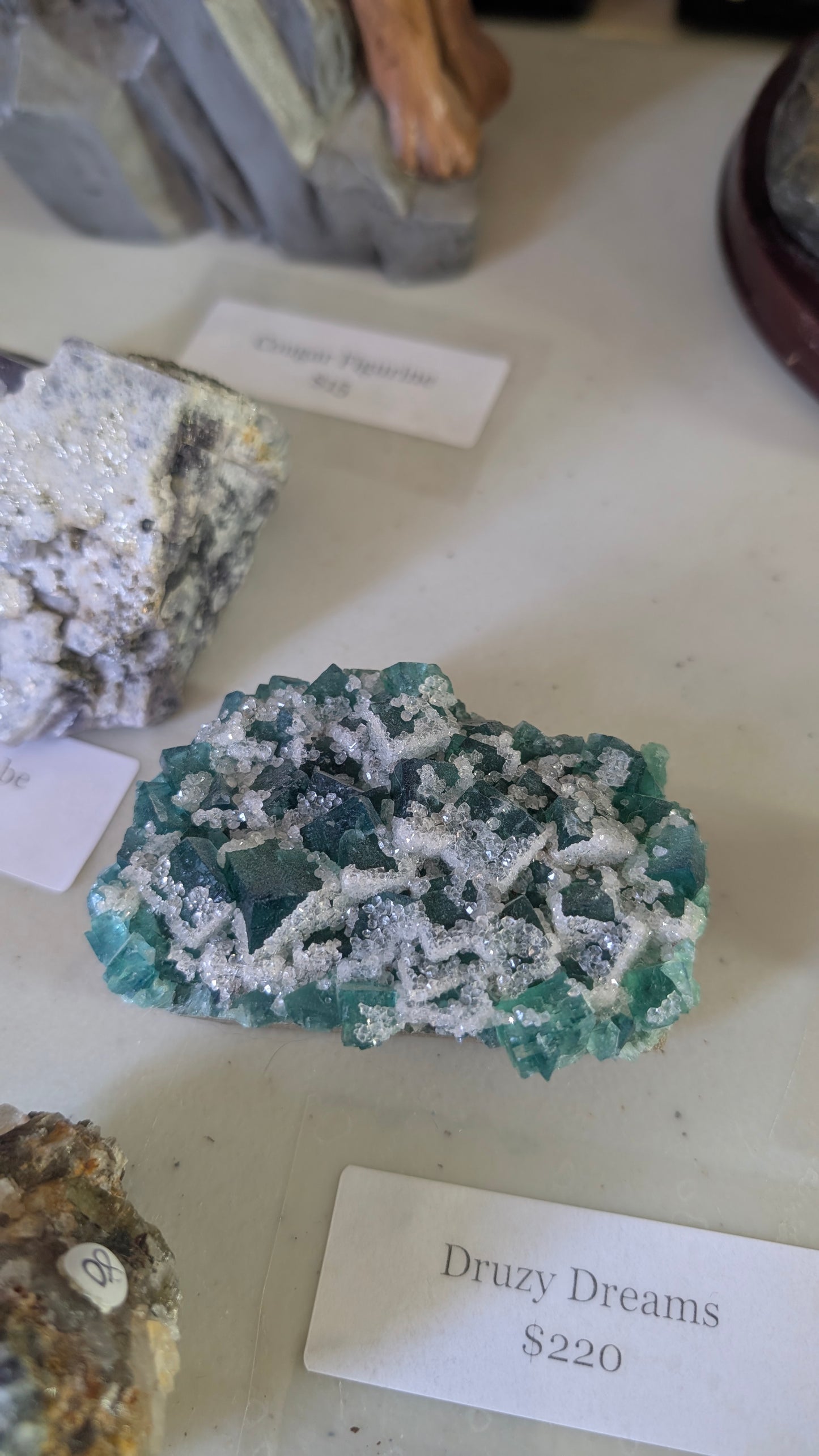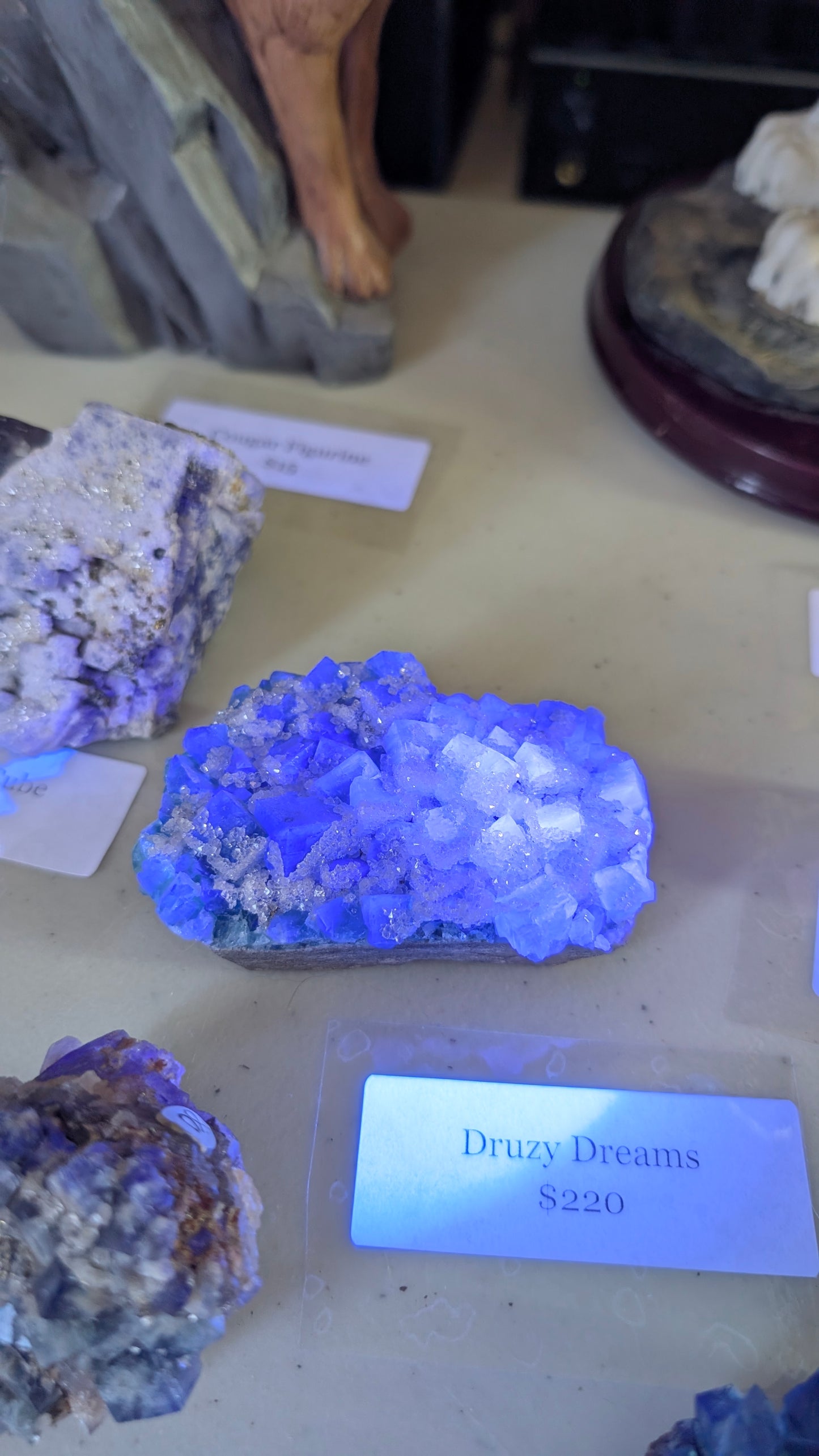My Store
Druzy Dreams Fluorite
Druzy Dreams Fluorite
Couldn't load pickup availability
A beautiful fluorite specimen from the Druzy Dreams pocket.
--
Fluorite primarily forms through hydrothermal processes, where hot, mineral-rich fluids containing dissolved calcium and fluorine ions circulate through cracks and fissures in the Earth's crust. As these fluids cool, the ions combine to precipitate and form fluorite crystals, often within veins in igneous rocks like granitic pegmatites or in limestones. The cooling and chemical interaction of these fluids with surrounding rock are critical factors in crystal formation. Fluorite can also form in sedimentary environments, such as evaporite deposits where saline waters evaporate, leaving behind dissolved minerals, or in marine sediments through the slow accumulation of organic matter and minerals. The mineral crystallizes in an isometric cubic system, commonly forming cubes, octahedrons, or dodecahedrons, although other forms like massive, botryoidal, or even pseudospherical aggregates can occur due to rapid or imperfect growth conditions. The presence of impurities, changes in temperature, or variations in the chemical composition of the fluids during formation are responsible for the wide range of colors seen in fluorite, a phenomenon known as color zoning.
Share




